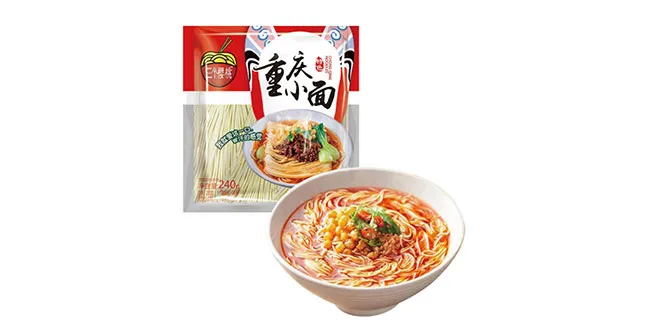Are Buckwheat Noodles a Low Carb Option for Healthy Eating?
Are Buckwheat Noodles Low Carb? Exploring Their Nutritional Profile
In the quest for healthier eating options, particularly for those adhering to low-carb diets, the question of whether buckwheat noodles qualify as a suitable choice often arises. Often confused with gluten-free pasta, buckwheat noodles have gained popularity in various culinary traditions, especially in Asian cuisine. However, understanding their nutritional content, particularly in terms of carbohydrate level, is crucial for making informed dietary choices.
What Are Buckwheat Noodles?
Buckwheat noodles, commonly known as soba noodles, are made from buckwheat flour. Despite its name, buckwheat is not a grain but rather a pseudocereal, meaning it is a seed with grain-like properties. It is gluten-free, making it a fantastic choice for people with gluten sensitivities or celiac disease. Buckwheat is also rich in essential nutrients, including protein, fiber, vitamins, and minerals.
Nutritional Profile of Buckwheat Noodles
When discussing whether buckwheat noodles are low-carb, one must first examine their nutritional profile. A typical serving (about 100 grams) of cooked buckwheat noodles contains approximately
- Calories 99 - Carbohydrates 21 grams - Protein 5 grams - Fat 0.6 grams - Dietary Fiber 2 grams
From this breakdown, it is clear that buckwheat noodles do contain carbohydrates—21 grams per serving, which is not insignificant. However, they also offer dietary fiber, which plays an essential role in digestive health. The presence of fiber in foods can help mitigate spikes in blood sugar levels, thereby enabling a more balanced approach to carbohydrate consumption.
Comparing to Traditional Pasta
To better understand the carbohydrate content of buckwheat noodles, it's helpful to compare them with conventional wheat pasta. A similar serving of regular pasta (100 grams) typically contains around 25 grams of carbohydrates, making buckwheat noodles slightly lower in carbs. However, traditional pasta is often higher in protein and may contain fortified nutrients such as iron.
This comparison is vital for individuals focusing on reducing carb intake while still aiming for a nutritious diet. Each type of noodle brings its own unique set of qualities to the table, making them appropriate for different dietary needs and preferences.
is buckwheat noodles low carb

Health Benefits of Buckwheat Noodles
Beyond the carbohydrate content, buckwheat noodles offer various health benefits that make them a worthy addition to a balanced diet. Some notable advantages include
1. Rich in Antioxidants Buckwheat contains antioxidants such as rutin, which can promote heart health by improving blood circulation and lowering blood pressure.
2. Good Protein Source While not as high as meat or legumes, buckwheat noodles contain a decent amount of protein. For those on a vegetarian or vegan diet, this can be beneficial for meeting protein needs.
3. Low Glycemic Index Buckwheat has a relatively low glycemic index compared to other carbohydrate sources. This quality is beneficial for controlling blood sugar levels, making it suitable for individuals with diabetes.
4. Nutrient-Rich Buckwheat is a source of essential nutrients, including magnesium, copper, and manganese, which are important for various bodily functions.
Making Buckwheat Noodles Part of Your Diet
Incorporating buckwheat noodles into your diet does not mean you have to sacrifice flavor. They can be used in various dishes, from stir-fries and soups to salads and cold noodle dishes. To maintain a low-carb diet, consider pairing buckwheat noodles with protein-rich ingredients and a variety of vegetables to create balanced meals.
Conclusion
So, are buckwheat noodles low carb? While they do contain carbohydrates, they are lower in carbs compared to traditional wheat pasta and come with numerous health benefits. For anyone looking to diversify their diet while managing carbohydrate intake, buckwheat noodles present an excellent option. They allow individuals to enjoy delicious meals without forgoing nutritional value, making them a delightful inclusion in any healthy eating plan. As with any food, moderation is key, and pairing them thoughtfully with other food groups can help maintain a balanced approach to diet and nutrition.
-
Unleash Your Inner Chef with Delectable Italian Pasta CreationsNewsAug.01,2025
-
Savor Health and Flavor: Irresistible Soba Noodles for Sale Await!NewsAug.01,2025
-
Nourish Your Body with Premium Organic Ramen - A Culinary Delight AwaitsNewsAug.01,2025
-
Elevate Your Dishes with Our Exquisite Kinds of Egg NoodlesNewsAug.01,2025
-
Dive into Flavorful Convenience with Our Ramen OfferingsNewsAug.01,2025
-
Discover Exquisite Types of Naengmyeon and Chilled Soba NoodlesNewsAug.01,2025
-
Is Whole Wheat Pasta Healthy?NewsMay.30,2025
Browse qua the following product new the we

















































































































